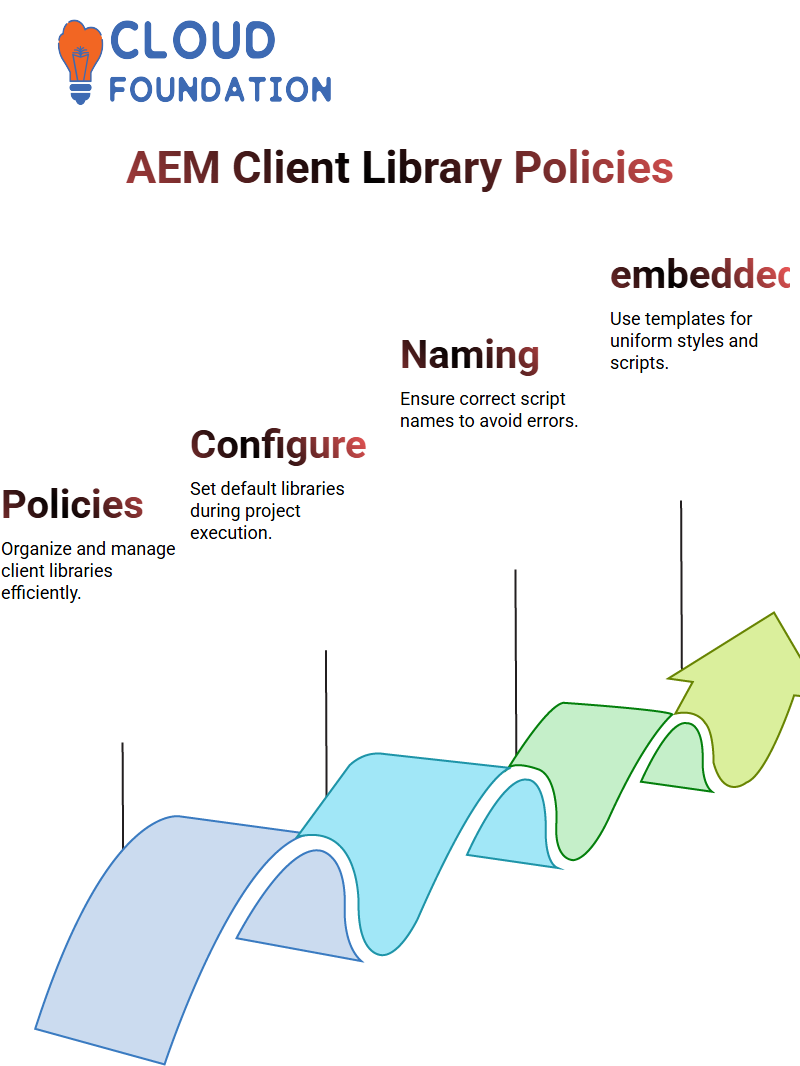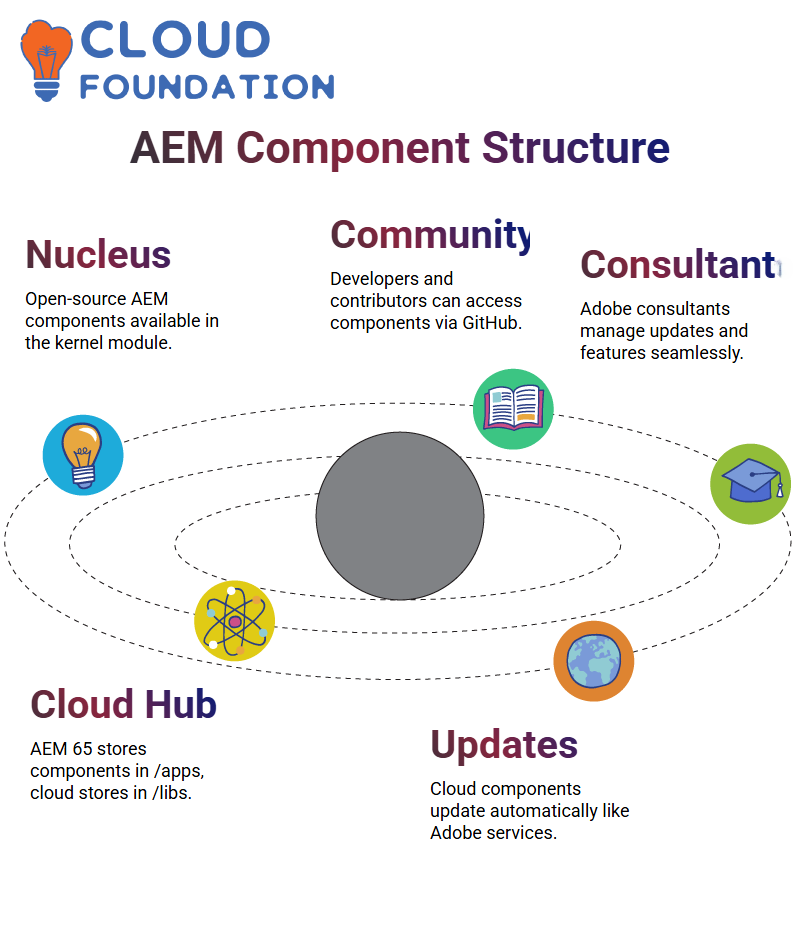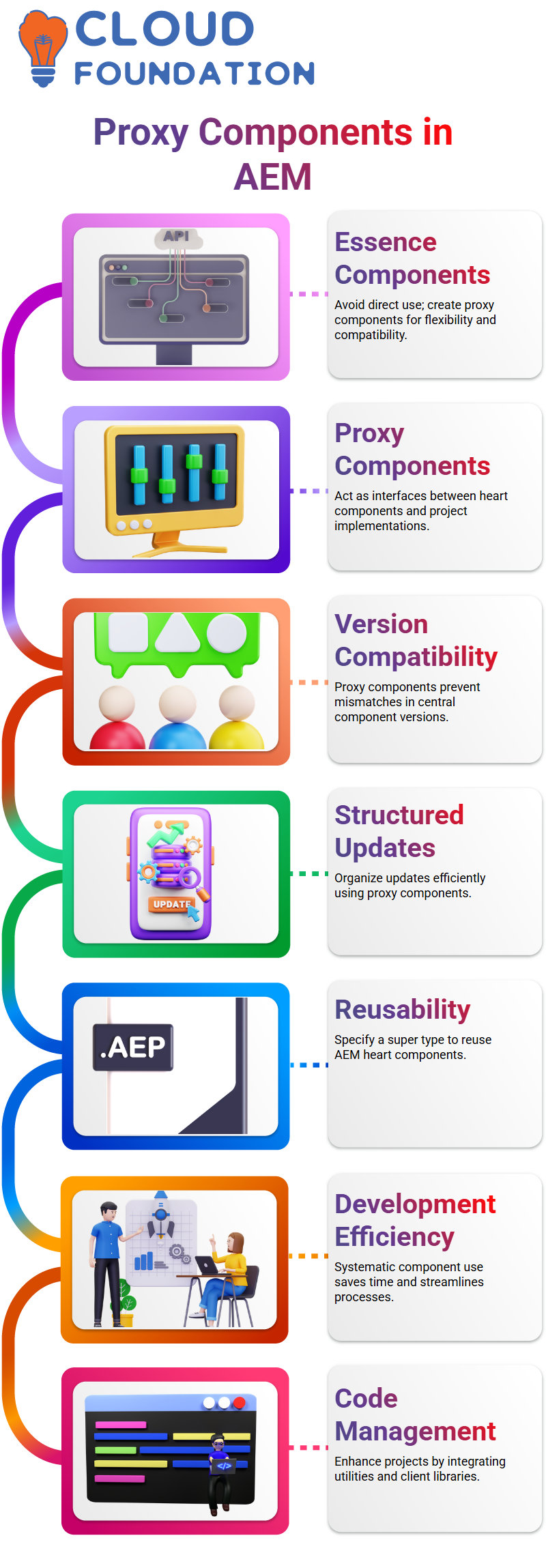Training on AEM Client Side Libraries
The Role in AEM
The ‘categories’ property of AEM is one of the central elements in creating client-side libraries.
It is the trend to introduce new cloud-based technologies, and AEM-aware decisiveness by the software players reflects this tendency Categories property is instrumental in mentoring the author as to what files this client library is composed of and is also being used for a well-organized storage.
AEM Client Libraries
Enabling client libraries in AEM is straightforward. You can create a new client library, specify dependencies, and include them through various methods—by code, configuration, or within the component dialogue node.

All ways are safe to guarantee that AEM applies styles and scripts correctly.
AEM offers you a great deal of freedom by way of covering client libraries. Instead of having to link each client library manually at the component level, you have the opportunity to embed them in a base or site-level library.
This approach enables you to maintain a consistent look and feel across the site, resulting in a uniform appearance.
AEM is the primary tool for managing digital assets, and client libraries are essential for organising assets more effectively.
Regardless of whether you are integrating JavaScript, arranging CSS, or managing site-wide configurations, AEM enables you to carry out these tasks with minimal effort.
Many times, I have been in situations where the components in AEM need proper synchronisation. The JavaScript is not visible on the screen for some reason; ensure that it is adequately included.
After implementation, the AEM system supplies debugging and optimisation features for client-side assets.
How to Control the AEM Client Libraries
Most AEM nucleus components are supplied with a separate client library, and a README file is often included to provide information about their runtime and build-time features.
Integrating them into the project ensures that the AEM components function perfectly.
AEM Client Libraries Productively
AEM developers often inquire how to operate and apply their component client libraries effectually. The foremost technique is to add a category name when specifying client libraries in a component’s dialogue.
If that is the case, you will produce the category name associated with the client library, and within the library, a CSS file will be created. This file will have all the styles that can be applied through JavaScript.
This is one of the three methods of capitalising on AEM client libraries, which is the most competent. Another method is to set a property from the component settings dialogue to the client library, and thus, clean and organised styling is kept throughout the AEM environment.
AEM Policies for Client Library Management
AEM policies enable developers to organise and direct client libraries most powerfully. Suppose a developer wants to add a usage client library.
In that case, they can do so directly through configuration, or a policy can also set the base client library to be used by default during project execution.

AEM assures that the site-wide setting remains consistent by enabling policies that register client libraries with proper category naming conventions.
Embedding Client Libraries
It is mandatory to be correct when inserting a client library in AEM.
Always ensure that there are no empty spaces when naming a script, as poorly formatted strings may hinder CSS or JavaScript from displaying on the front-end of the site.
AEM, on the one hand, has an element that allows you to check the properties embedded via its configuration.
One issue that frequently arises is the insertion of conventional client libraries. AEM facilitates embedding through templates, enabling a uniform visual style and scripts to be applied across various pages.
Dexterity AEM Client Libraries
AEM is adept at taking care of client libraries
Have you ever thought about what happens when different versions of the client libraries are included in AEM? Releases explain that.
In AEM, we have other versions, namely V1, V2, and V3, each with its dedicated client libraries. You may wonder why we have many client libraries if we are only inheriting elements from one.
The reason is that sometimes V3 has kernel elements that we need for our project, even though we have inherited them from V2.

AEM enables us to integrate client-side libraries from independent sources into our projects seamlessly.
Components in AEM Client Libraries
Working with AEM components, the most reliable way to add client libraries is by using the protected dialogues trait.
This way, imperative styles are only used in dialogue boxes, which significantly improves the user’s interaction with the UI.
A profound comprehension of the order of applications styled under AEM through client libraries is essential for control over client libraries.
AEM Core Components
The AEM has an innermost component library whose purpose is to provide the market with a wide range of production-ready, easy-to-use components.
To discover AEM, definitely knowing the Innermost Component on the GitHub project would be of great help.
AEM Hub Components
Adobe Experience Manager offers a comprehensive environment for developers, enabling them to create and reuse components.
Among all others, AEM centre components top the list, as they are production-ready solutions that correctly fit into the particular process.
AEM nucleus components not only save time but also spare resources. Users do not have to create new elements from scratch.
Applying a ready-made solution that is also easy to modify or expand, when necessary, will be the human choice.
AEM’s innermost components provide adaptability; thus, a project can transition from an image component to a directing component solely by the flexibility offered by AEM’s nucleus components.
AEM Nucleus Components
These components are part of AEM’s features and are located in the ‘kernel’ module of the apps folder, which is available to developers.
There, the open-source components are published and contributed to by the community. Additionally, anyone can use and contribute to them via GitHub, as they are available for open download.
Consultants, who Adobe itself employs, perform all the work in the warehouse where updates and features are being added.
 Thus, developers don’t need to install any of the parts above individually. They are things that AEM uses directly, thereby facilitating the development process.
Thus, developers don’t need to install any of the parts above individually. They are things that AEM uses directly, thereby facilitating the development process.
AEM Hub Components in Cloud Locale
The location of the centre components is one of the main differences between AEM 65 and AEM in cloud conditions.
Typically, in AEM 65, the heart components are located in the /apps folder. Still, in cloud conditions, Adobe has decided to store them in the ‘libs’ folder to avoid a problem of unwanted shifts and to be able to control different versions of the components.
Realising that users coming from the cloud wouldn’t understand how it is done, as they don’t know how to do it manually, but still want the result, it is simplified.
Additionally, they don’t manually update the hub components, unlike in the cloud case. The updates are the same as those for the services, such as those from Adobe, which aim to keep their customers informed about the latest adjustments.
This alteration enables AEM to be more capable and reduces the likelihood of incompatibility issues when new components are integrated.
Proxy Components in AEM
Although AEM essence components are ready for production, it is strongly advised not to use them directly in projects.
The approach involves developers generating proxy components that are initially children of essence components. In doing so, they can still enjoy the benefits of flexibility and control in the project while also achieving compatibility.
Proxy components, also known as interface components, are the connectors that intermediate between heart components and different implementations.
This process of utilising the proxy component ensures that no issues arise from a mismatch in the central component versions.
The developers would not be following a strict pattern of taking advantage of, but rather a method of organising the updates via proxy components.
This way, they have the advantage of the innermost practicality of AEM, and at the same time, they are in complete control of the adaptation.

AEM enables the construction of proxy components that, distinct from inheriting utility from innermost components, are also a powerful mechanism.
Instead of coding everything from scratch, you can reuse existing components by specifying a super type that points to the AEM heart component.
Strengthening AEM Projects
Construction on heart-complicated components of AEM entails that the development process has been made systematic, which also goes a long way in saving time.
Instead of creating new features, developers can adopt utilities, include client libraries, and use AEM features in advance, without dirty code collaboration.
Performing tasks in AEM
Going through exercises in AEM is one of the best ways to merge one’s knowledge of its architecture.
The use of delighted policies, proxy component configuration, and layout conformity ensures that AEM supports developers in scaling pages effectively.
At the same time, they don’t have to write the code. Another reason to complete exercises manually is to become an experienced AEM user, thereby ensuring that AEM skills are familiar to the person creating the content.
AEM Debugging: Ordinary Mistakes
The process of debugging an AEM project involves examining the page sources, searching for and viewing client library nodes, and verifying that assets are linked.
If a component does not appear, I always take a break and I recheck all the embedding properties and category names.
Additionally, client libraries can be loaded once and used in multiple projects.
Developers can now maintain their pace while being time-efficient without facing project compatibility issues.
Integrated Development in AEM
We’ve completed the client libraries in AEM plain statistics, which are essential now, and we can see how vital and capable the system is for controlling component styling and connections.
The use of these methods will help AEM developers eliminate unproductive workflows, ensuring that their components are correct in terms of style and do not require additional manual commands.

Utilise these methods if you are involved in an AEM project, ensuring your UI remains organised.
AEM is a highly organised way to manage styles and scripts across components, which benefits developers by simplifying the development process.
This way, you can try AEM, learn about client libraries, and discover how they could aid in your projects.

Vinitha Indhukuri
Author



